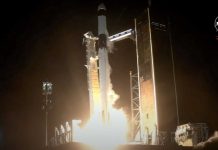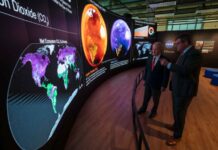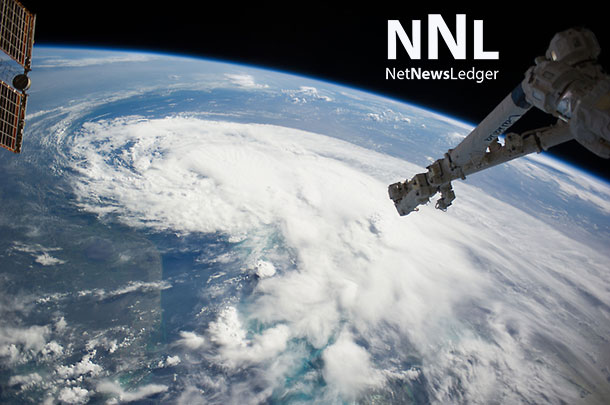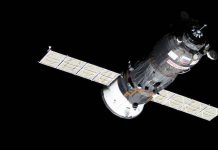 Space Station is Quieter without Chris Hatfield
Space Station is Quieter without Chris Hatfield
HOUSTON – Canadian Astronaut Chris Hatfield isn’t aboard the International Space Station sharing images, Tweets, and music. Hatfield has now retired from the Space Program. However work aboard the International Space Station is continuing. For many here on Earth the engagement with Chris Hatfield likely helped to boost the interest in science, space flight and the astronaut program.
Without the stream of information, the Space Station has seemed quieter.
That does not mean lots of important work is not being done.
One scientific effort is in testing the scientific properties of water.
Space Research Continues
The ISS reports, “There is a moment when everything changes. Something familiar crosses a boundary and suddenly behaves in new ways. Take water for example. In middle school science class, you probably learned about saturation points when adding salt to a liquid. Or you discovered the importance of phase changes when going from boiling to steam or from freezing to ice. That moment of change is now being studied at a new level in space”.
At sea level, water boils at 212 degrees Fahrenheit, and both liquid and water vapor (i.e., steam) coexist. However, water heated under high pressures (more than 3,200 pounds per square inch, about the amount of pressure in 100 car tires) doesn’t boil. Above the critical temperature of 705 degrees Fahrenheit, water behaves like a dense gas where its distinct liquid and vapor phases no longer exist. At this point, any salt in the water no longer is soluble. It separates, or precipitates, from the water and attaches itself to surfaces like heating coils and pipes.
In order to study this phenomenon, the Supercritical Water Mixture (SCWM) investigation currently is running aboard the International Space Station. It is a joint effort between NASA and Centre National d’Etudes Spatiales (CNES), the French space agency.

“By studying supercritical and near-critical water without the effects of gravity, we’ll look at how salt precipitates on a very fundamental level,” said Mike Hicks, SCWM principal investigator at NASA’s Glenn Research Center in Cleveland. “We’ll look at some fundamental questions: how is salt actually transported in this medium without the influences of gravity; what happens to the salt/water mixture when taken past the critical point; how does it precipitate; at what point does it start to agglomerate and clump together to where you can actually see little salt particles in the water?”
Work Ongoing in Space
This week, the Expedition 36 crew completed packing the Materials International Space Station Experiment-8 (MISSE-8) Payload Experiment Container (PEC) and Optical Reflector Materials Experiment-III (ORMatE-III) after it was retrieved during the spacewalk. The MISSE-8 samples have been in orbit for a little over two years and the PEC and ORMatE are manifested for return to Earth on SpaceX 3. MISSE-8 is test bed for materials and computing elements, attached to the outside of the International Space Station, that are being evaluated for the effects of atomic oxygen, ultraviolet direct sunlight, radiation and extremes of heat and cold. Results will help in the development of new materials for future spacecraft. The knowledge gained on solar UV reactions with various materials may help make plastic products such as siding for houses more durable. The new advanced materials and components being demonstrated in MISSE-8 will improve the performance, increase the useful life, and reduce the costs of future space operations of commercial weather, communication and Earth observation satellites that we all now depend on, as well as enhance solar cell technology.
The crew prepared the fourth sample for ground-commanded science operations for the Advanced Colloids Experiment-1 (ACE-1) study by mixing the sample well, dispensing oil on the sample and installing it into the Light Microscopy Module (LMM) of the Fluids Integrated Rack (FIR). The ground team monitored aggregation of the colloids solution for 72 hours. ACE-1 is a series of microscopic imaging investigations that uses the microgravity environment to examine flow characteristics, and the evolution and ordering effects within a group of colloidal materials. The ACE-1 samples provide important data that is not available on Earth; data that can guide our understanding of crystallization, production quality control and phase separation (e.g., shelf life and product collapse). Additionally, since product shelf life may be dependent upon binodal decomposition and possibly upon Ostwald ripening (coarsening) in the emulsion samples, a better understanding of these processes could have an enormous commercial impact in terms of quality, production and longevity.
Other human research investigations continued for various crew members including Space Headaches, and Reaction Self Test.The ground team completed all of their 24 planned science runs for Expedition 35/36 for the Marangoni study. This experiment investigates Marangoni convection in microgravity, a process driven by the presence of a surface tension gradient produced by temperature differences occurring at a liquid/gas interface. This will help improve the efficiency of thermal devices. The knowledge from Marangoni space experiment is applicable to the high-performance heat exchanger and heat pipe in space and on Earth. Designing more efficient, lightweight radiators that remove unwanted heat from spacecraft is critical for long-duration space missions.













